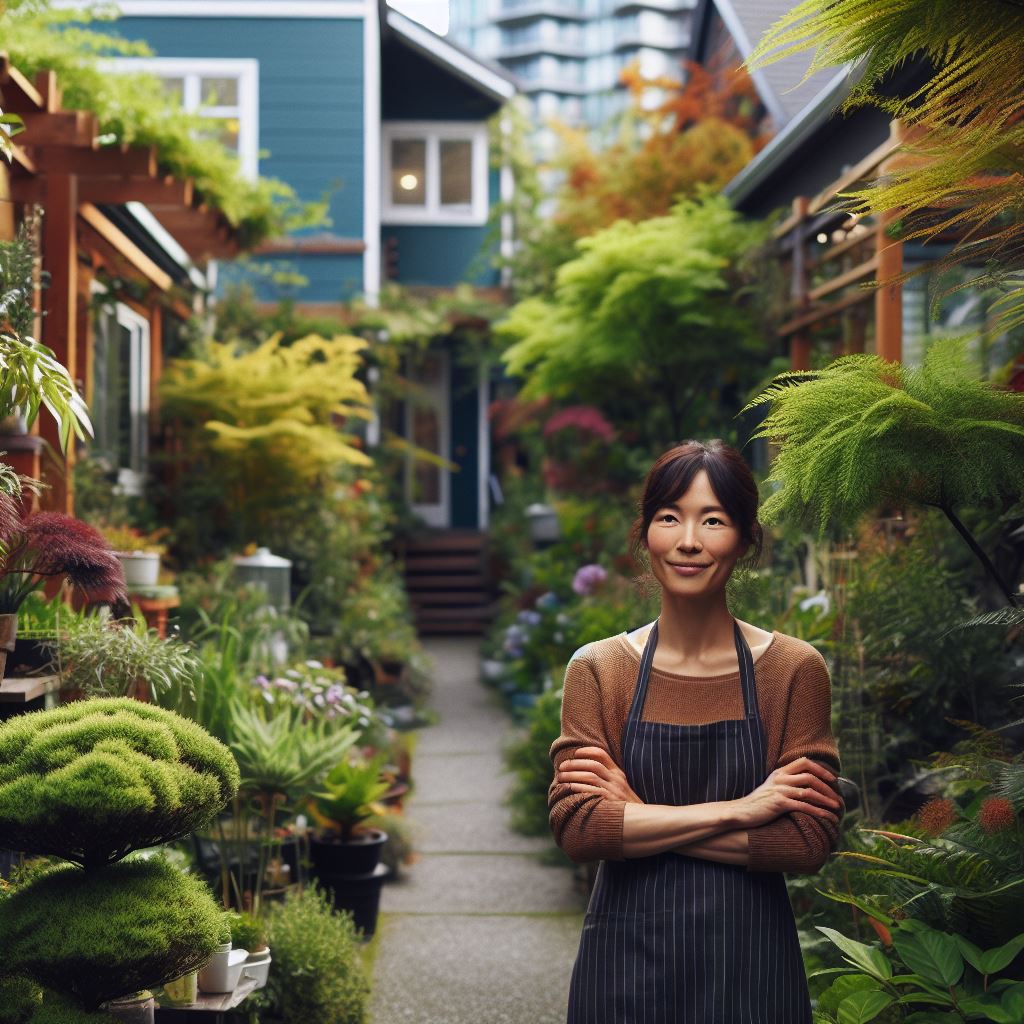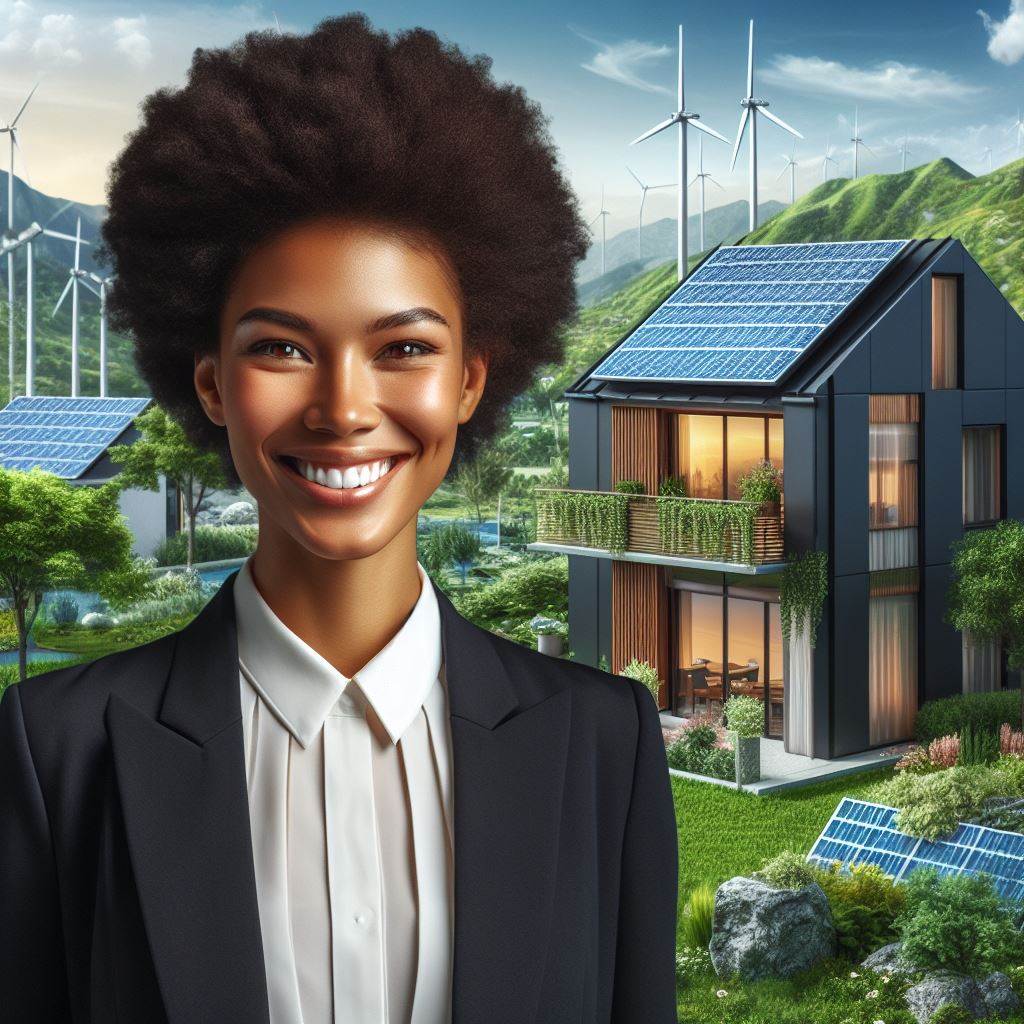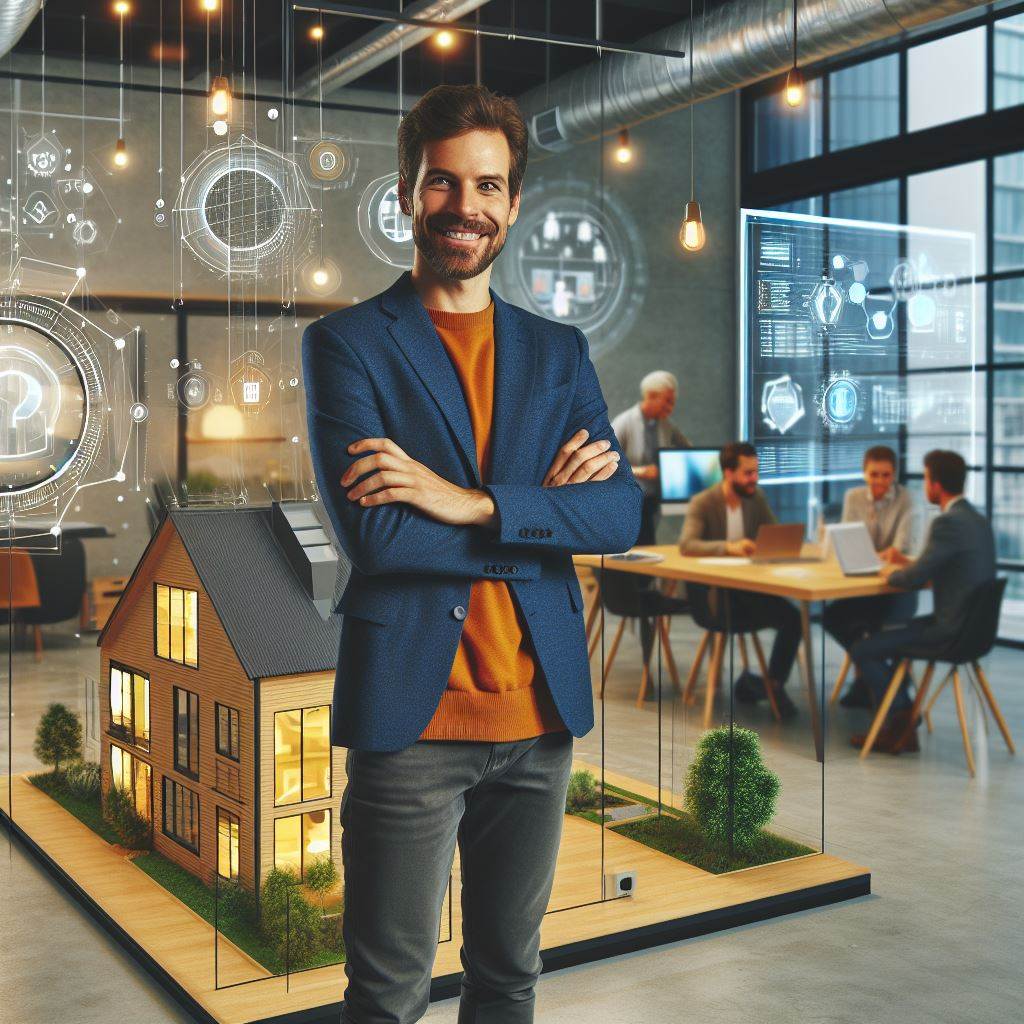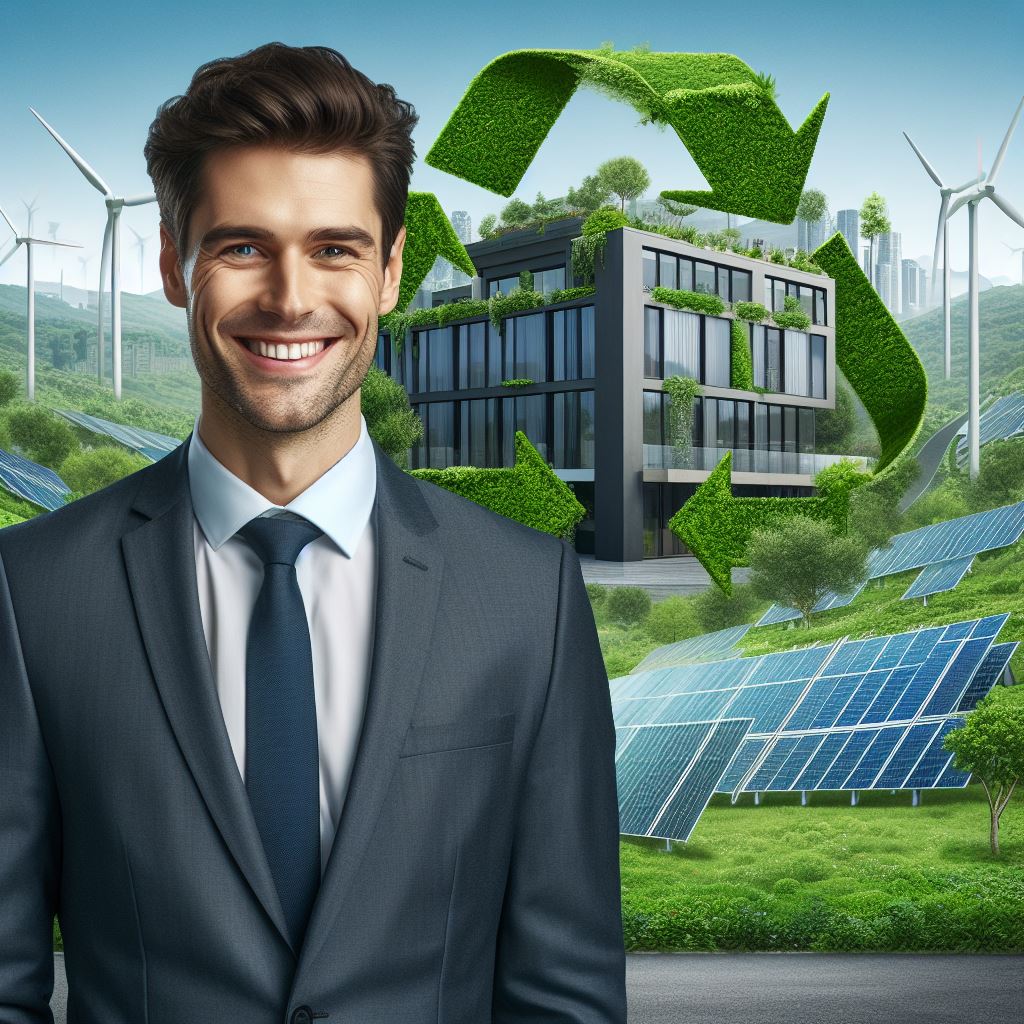Introduction
Retrofitting old buildings is vital for a green future. It’s imperative to acknowledge the significance of refurbishing existing structures to align with sustainable practices.
In today’s world, where environmental concerns are paramount, retrofitting offers a practical solution to mitigate the carbon footprint associated with buildings.
Retrofitting means upgrading existing structures for energy efficiency.
It involves implementing various measures such as installing insulation, upgrading HVAC systems, incorporating renewable energy sources, and optimizing water usage.
These enhancements not only reduce energy consumption but also contribute to the overall environmental performance of buildings.
Retrofitting is crucial for sustainability in real estate.
By retrofitting old buildings, we can significantly reduce greenhouse gas emissions, decrease reliance on non-renewable resources, and create healthier indoor environments.
This thesis underscores the urgent need for widespread adoption of retrofitting practices to foster a more sustainable future in the real estate sector.
The Benefits of Retrofitting Old Buildings
Retrofitting old buildings for a green future offers numerous benefits that extend beyond environmental considerations.
With the increasing awareness and urgency surrounding sustainability, retrofitting has become a primary focus of the construction and real estate industries.
By revamping existing structures, these buildings can become more energy-efficient, reduce greenhouse gas emissions, improve indoor air quality, enhance durability and resilience, and increase property values.
Reduces energy consumption
Reducing energy consumption is vital in mitigating the effects of climate change and lowering utility costs.
Retrofitting old buildings allows for the utilization of energy-efficient appliances and systems such as LED lighting, low-flow water fixtures, and occupancy sensors, which can significantly reduce energy usage.
Additionally, insulation and weatherization improvements prevent heat loss during winter and reduce heat penetration during summer, further curbing energy consumption.
Lowers greenhouse gas emissions
Lowering greenhouse gas emissions is crucial for combating climate change.
Transform Your Real Estate Decisions
Unlock personalized real estate insights crafted just for you. Get actionable advice designed to amplify your success.
Get StartedRetrofitted buildings often incorporate renewable energy sources like solar panels or wind turbines, decreasing reliance on fossil fuels and ultimately reducing carbon footprints.
These initiatives contribute to a greener future by minimizing the release of harmful gases into the atmosphere, thus mitigating the negative impacts of global warming.
Improves indoor air quality
Improving indoor air quality is imperative for the health and well-being of occupants.
Retrofitting allows for the implementation of advanced ventilation systems and air purification technologies, reducing pollutants and allergens inside buildings.
By ensuring better air quality, occupants are less likely to suffer from respiratory issues and allergies, resulting in a healthier and more productive indoor environment.
Enhances building durability and resilience
Enhancing building durability and resilience is crucial for long-term sustainability.
Retrofitting includes strengthening the structural integrity of the building, making it more resistant to natural disasters such as earthquakes or hurricanes.
Additionally, implementing measures to mitigate moisture and mold growth helps extend the lifespan of the building.
These improvements not only protect the occupants but also reduce the need for frequent maintenance and repairs.
Increases property value and market competitiveness
Increasing property value and market competitiveness are significant advantages of retrofitting old buildings.
Green buildings have higher market appeal and value due to their energy efficiency and sustainable features.
Investors and tenants are increasingly seeking environmentally responsible properties, as they offer long-term cost savings and align with global sustainability goals.
Retrofitting allows property owners to attract a wider pool of tenants and command higher rental rates or sales prices, enhancing their overall market competitiveness.
In fact, retrofitting old buildings for a green future is a multifaceted approach that yields numerous benefits.
Showcase Your Real Estate Business
Publish your company profile on our blog for just $200. Gain instant exposure and connect with a dedicated audience of real estate professionals and enthusiasts.
Publish Your ProfileIt reduces energy consumption, lowers greenhouse gas emissions, improves indoor air quality, enhances building durability and resilience, and increases property value and market competitiveness.
With the pressing need for sustainable solutions, retrofitting offers significant long-term advantages, both for building occupants and the environment.
Embracing this practice is essential to create a greener, more sustainable future for generations to come.
Read: Historic Building Profitable Makeover
Retrofitting Techniques and Strategies
Retrofitting old buildings for a green future involves implementing various techniques and strategies to improve energy efficiency and sustainability.
By focusing on different aspects such as lighting, HVAC systems, insulation, renewable energy, and water efficiency, these retrofits can transform outdated structures into eco-friendly spaces.
Energy-efficient lighting
One of the key retrofitting techniques is upgrading lighting systems to energy-efficient alternatives.
LED technology, known for its longevity and reduced energy consumption, is a popular choice.
Additionally, installing occupancy sensors and dimmers help optimize lighting usage, further conserving energy.
HVAC system upgrades
Improving the heating, ventilation, and air conditioning (HVAC) systems is crucial for achieving energy efficiency.
High-efficiency heating and cooling systems, such as heat pumps or solar thermal systems, can replace outdated equipment, reducing energy waste.
Smart thermostats and zone controls enable personalized temperature settings and better energy management.
Insulation and weatherization
Enhancing insulation and weatherization is vital to minimize energy loss and maintain comfortable indoor environments.
Retrofitting measures may include upgrading windows and doors to energy-efficient alternatives and sealing gaps to prevent drafts.
Roof insulation, along with the application of reflective coatings, helps regulate indoor temperatures and reduce cooling and heating demands.
Renewable energy integration
Integrating renewable energy sources into the building’s energy supply plays a significant role in achieving sustainability goals.
Installing solar panels or wind turbines on rooftops or unused spaces can generate clean electricity onsite.
Geothermal heating and cooling systems utilize the Earth’s thermal energy, contributing to efficient HVAC operations.
Water efficiency improvements
Water consumption reduction is another essential aspect of retrofitting buildings for a green future.
Installing low-flow fixtures and toilets helps conserve water without compromising functionality.
Implementing rainwater harvesting systems allows buildings to collect and repurpose rainwater for non-potable uses.
Greywater systems treat and reuse water from sinks, showers, and laundry, further reducing water consumption.
In short, retrofitting old buildings for a green future involves implementing various techniques and strategies.
Energy-efficient lighting, HVAC system upgrades, insulation, renewable energy integration, and water efficiency improvements are key components of these retrofits.
By employing these measures, buildings can significantly reduce energy consumption, lower carbon emissions, and contribute to a sustainable future.
Retrofitting not only benefits the environment but also improves the comfort, functionality, and long-term value of buildings.
Read: Climate Change & Commercial Property Impact
Challenges and Considerations in Retrofitting Old Buildings
Structural limitations and building code compliance
Retrofitting old buildings often presents structural limitations due to their age and original design.
These buildings may lack the necessary infrastructure or capacity to accommodate modern green technologies.
Renovations and alterations might be required to ensure the building can support sustainability improvements effectively.
Showcase Your Real Estate Business
Publish your company profile on our blog for just $200. Gain instant exposure and connect with a dedicated audience of real estate professionals and enthusiasts.
Publish Your ProfileBuilding code compliance poses another challenge when retrofitting old buildings.
Older structures may not meet current codes and standards, especially in terms of energy efficiency requirements.
Adhering to updated regulations often necessitates significant modifications and additions to the building’s design and systems.
Cost and financial incentives
The cost of retrofitting old buildings can be substantial, which may deter building owners or operators from pursuing sustainability upgrades.
The expenses associated with structural modifications, energy-efficient equipment installations, and system upgrades can quickly add up.
However, there are various financial incentives available to encourage retrofitting efforts.
Government programs, such as tax credits and grants, offer financial support to offset the costs of sustainable renovations.
These incentives aim to motivate building owners to invest in environmentally friendly measures.
Additionally, energy-efficient upgrades can result in long-term cost savings through reduced energy consumption and lower utility bills.
Potential disruption during the retrofitting process
Retrofitting old buildings can disrupt the normal functioning of occupants and operations within the premises.
Construction activities may cause noise, dust, and limited accessibility, impacting the daily activities of businesses or residents.
It is essential to manage and mitigate these disruptions to maintain a positive occupant experience.
Effective communication is crucial during retrofitting projects to keep building occupants informed about the process, expected disruptions, and alternative arrangements.
Developing a comprehensive construction plan that considers occupant needs and minimizes inconveniences can help alleviate potential conflicts and complaints.
Compatibility with historical or cultural preservation
Preserving the historical or cultural significance of old buildings is a critical consideration during retrofitting.
It is necessary to strike a balance between implementing green measures and preserving the building’s unique features or heritage.
Sustainability upgrades should not compromise the building’s historical integrity or cultural value.
Architects, designers, and preservation experts should collaborate to find innovative solutions that merge sustainability goals with historical or cultural preservation requirements.
This may involve using techniques that seamlessly blend modern green technologies with the building’s original aesthetics or employing sustainable materials and practices that align with the structure’s historical context.
Retrofitting feasibility assessment
Before embarking on a retrofitting project for an old building, conducting a comprehensive feasibility assessment is essential.
This assessment evaluates the building’s current condition and potential retrofitting strategies, analyzes associated costs and benefits, and identifies any potential challenges or limitations.
The assessment should consider factors such as the building’s structural stability, energy efficiency potential, and available space for system installations.
Additionally, it should account for the building’s historical or cultural significance and ensure that proposed retrofitting measures align with preservation requirements.
A feasibility assessment helps building owners make informed decisions about the viability and scope of retrofitting projects.
In general, retrofitting old buildings for a greener future requires careful consideration of various challenges and factors.
It is necessary to address structural limitations, ensure building code compliance, manage costs, minimize disruptions, preserve historical or cultural significance, and conduct thorough feasibility assessments.
By overcoming these challenges, old buildings can be transformed into sustainable and environmentally friendly structures, contributing to a greener future.
Read: Tech Hubs: Investing in Innovation
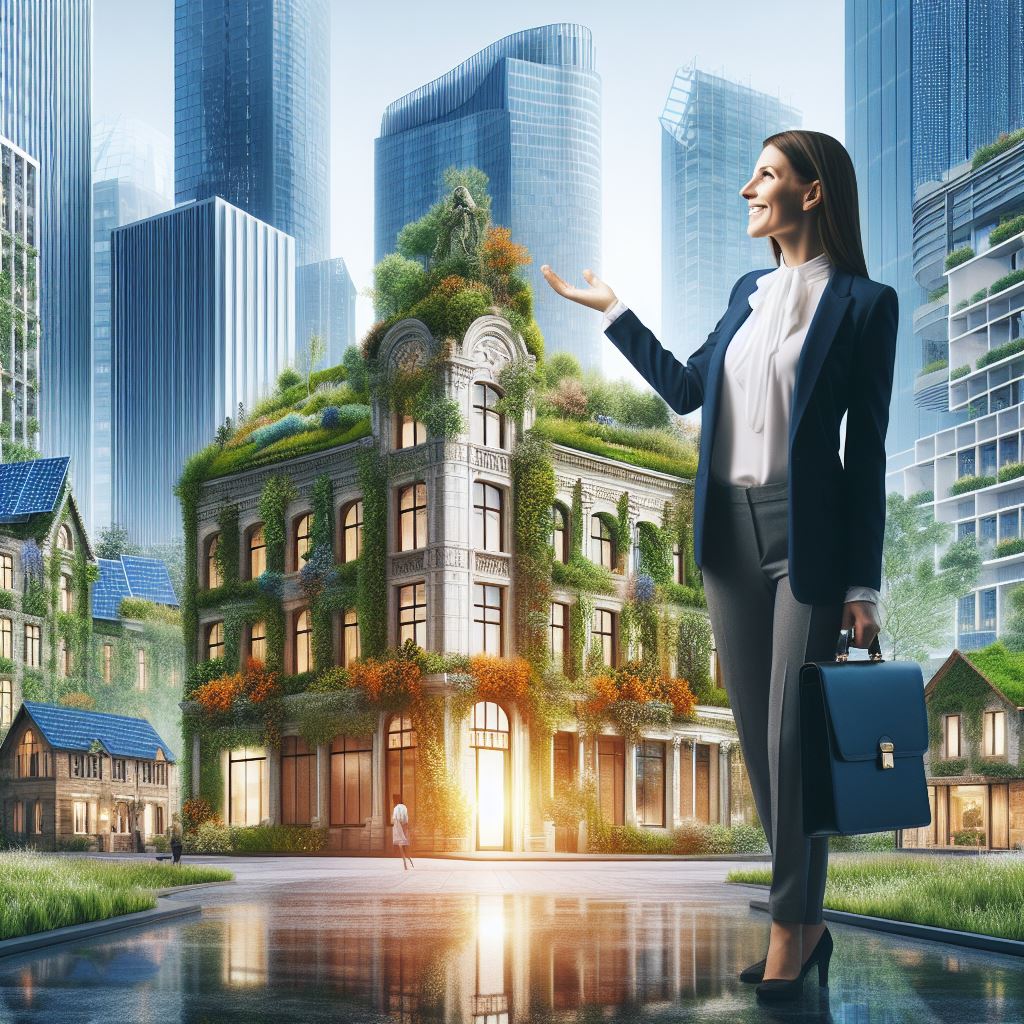
Successful Case Studies of Retrofitting Old Buildings
Retrofitting old buildings for a green future is not merely a concept or theoretical practice; it is a tangible reality that has been successfully implemented in many real-life case studies.
Commercial and residential buildings around the world have undergone transformative retrofits that have improved their sustainability and energy efficiency, serving as examples for future projects.
Showcase Your Real Estate Business
Publish your company profile on our blog for just $200. Gain instant exposure and connect with a dedicated audience of real estate professionals and enthusiasts.
Publish Your ProfileExamples of commercial buildings retrofitted for sustainability
The Empire State Building in New York City is one of the most iconic examples of a successfully retrofitted commercial building.
The retrofit included measures such as energy-efficient lighting, improved insulation, and updated HVAC systems.
These changes resulted in a remarkable 38% reduction in energy consumption, leading to substantial cost savings.
The Transamerica Pyramid in San Francisco is another notable example.
The retrofit of this historic building focused on enhancing sustainability through various measures, including the installation of energy-efficient lighting and HVAC systems.
These improvements not only reduced the building’s environmental impact but also improved occupant comfort and productivity.
The Willis Tower in Chicago, formerly known as the Sears Tower, is the third example of a successful commercial building retrofit.
The retrofit included the installation of transparent, heat-reflective glass, which reduced solar heat gain without compromising the building’s aesthetics.
This upgrade significantly improved energy efficiency and sustainability.
Examples of residential buildings retrofitted for energy efficiency
Historic brownstones in urban areas, such as the one in Brooklyn, have been retrofitted to improve energy efficiency.
The retrofit of this particular brownstone involved the use of energy-efficient appliances, insulation, and the installation of solar panels.
These modifications not only reduced energy consumption but also lowered utility bills for the homeowners.
Older residential buildings, like Victorian-era houses, have also been retrofitted for energy efficiency.
A house in London underwent a transformation that included the installation of double-glazed windows to minimize heat loss and a geothermal heating system that utilized the earth’s natural warmth.
These retrofits greatly improved the building’s energy performance and reduced its carbon footprint.
Traditional wooden cottages, like the ones found in Scandinavian countries, have also undergone successful retrofits.
In Sweden, a wooden cottage was retrofitted with a heat pump and proper insulation.
These upgrades ensured that the cottage remained warm and energy-efficient, even in harsh winters, while reducing the reliance on traditional heating fuels.
Lessons learned and best practices from successful retrofits
Proper planning and assessment are crucial before undertaking a retrofit project.
Understanding the specific needs and constraints of a building helps identify the most effective retrofit strategies.
Collaboration between architects, engineers, and contractors is essential.
A multidisciplinary approach is necessary to address various aspects of the retrofit, such as energy efficiency, structural integrity, and occupant comfort.
Harnessing renewable energy sources and incorporating energy-efficient technologies can significantly reduce a building’s carbon footprint and reliance on non-renewable resources.
Proper insulation plays a crucial role in improving energy efficiency and reducing heating and cooling costs.
It prevents heat loss during winters and keeps the building cool during summers.
Implementing smart building automation systems allows for optimized energy usage and increased overall sustainability.
These systems can monitor energy consumption and adjust settings for maximum efficiency.
Regular maintenance and monitoring are essential to ensure that retrofit measures continue to perform effectively over time.
Periodic inspections and adjustments help maintain the intended energy and sustainability improvements.
These successful case studies and the lessons learned from them are invaluable resources for future retrofitting projects.
Showcase Your Real Estate Business
Publish your company profile on our blog for just $200. Gain instant exposure and connect with a dedicated audience of real estate professionals and enthusiasts.
Publish Your ProfileThey demonstrate that retrofitting old buildings is not only possible but also highly beneficial in creating a greener and more sustainable future.
Read: LEED Certification: What It Means for CRE
Conclusion
Recap of the importance of retrofitting old buildings for a green future
Retrofitting old buildings is crucial for a sustainable future. It helps reduce carbon emissions, conserve energy, and minimize waste.
By updating inefficient systems, such as heating, cooling, and lighting, we can create greener and more environmentally-friendly spaces.
Retrofitting also improves indoor air quality, making buildings healthier for occupants and reducing health risks associated with poor ventilation.
Additionally, retrofitting old buildings reduces the need for new construction, preserving resources and minimizing the environmental impacts of the construction industry.
Call to action for property owners and real estate industry stakeholders
Property owners and real estate industry stakeholders should take the initiative to retrofit old buildings.
They have the power to make a significant impact by investing in energy-efficient technologies, implementing sustainable practices, and promoting green certifications.
By doing so, they not only contribute to a greener future but also enhance the value and marketability of their properties.
Emphasizing the potential long-term benefits of retrofitting for both the environment and economy
The long-term benefits of retrofitting old buildings are manifold. By reducing energy consumption and carbon emissions, we combat climate change and mitigate its adverse effects.
Retrofitting also creates job opportunities in the green building sector and stimulates economic growth.
Furthermore, it helps reduce utility costs, making buildings more affordable and sustainable in the long run.
Overall, the decision to retrofit old buildings for a green future is a win-win for the environment, economy, and society as a whole.

